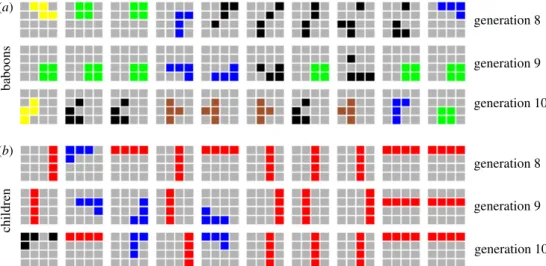High-fidelity copying is not necessarily the key to cumulative cultural evolution: a study in monkeys and children
Texte intégral
Figure



Documents relatifs
Checking balance through empirical distribution functions, interval 1 of the estimated propensity score distribution Original sample of treated vs final sample of matched
Nonetheless, a further logistic mixed-effects model excluding lines (and also excluding random slopes to avoid a singular model fit) suggests that this constant tendency to copy
A battery of clinical tools consisting of the Autism Diagnostic Observation Schedule, the revised version of the Autism Diagnostic Interview, measures of intellectual functioning,
Considering a benevolent TSO and a competitive generator, this paper examines the efficiency of the locational signals sent by nodal pricing and average
All pointing tasks were feasible without clutching, but clutch-less movements were harder to perform, caused more errors, required more preparation time, and were not faster
Average performance of the sparsest approximation using a general dictionary. CMLA Report n.2008-13, accepted with minor modifi- cations in Comptes Rendus de l’Acad´emie des
This correction factor is obtained from the negatively signed part of the impact parameter distribution of hadron tracks in a mainly light quark sample of data and Monte Carlo
The problem we discuss in this work is about the impact of the quality of the reference template in order to get the best accuracy performance for identification task on